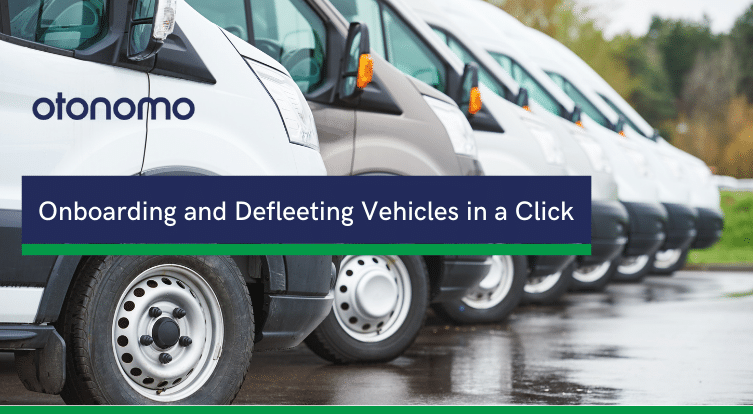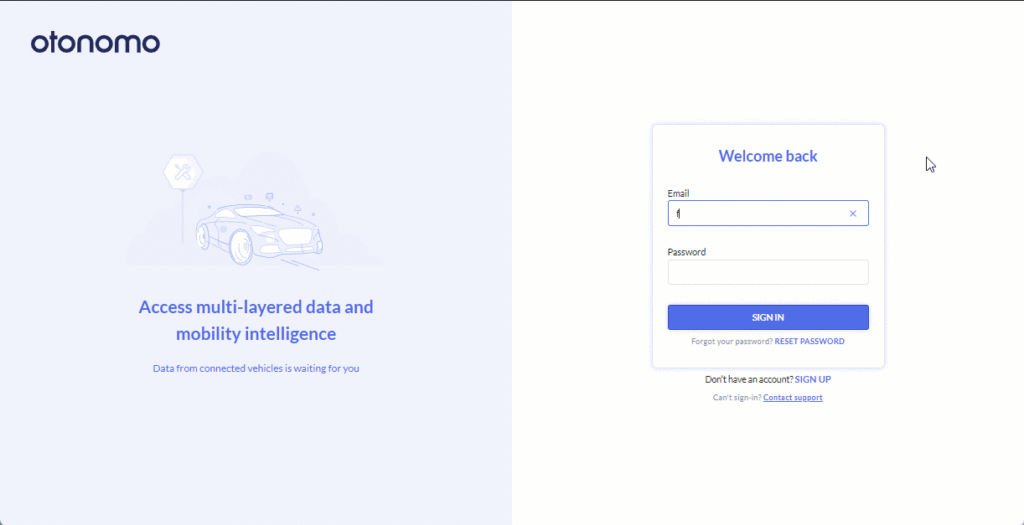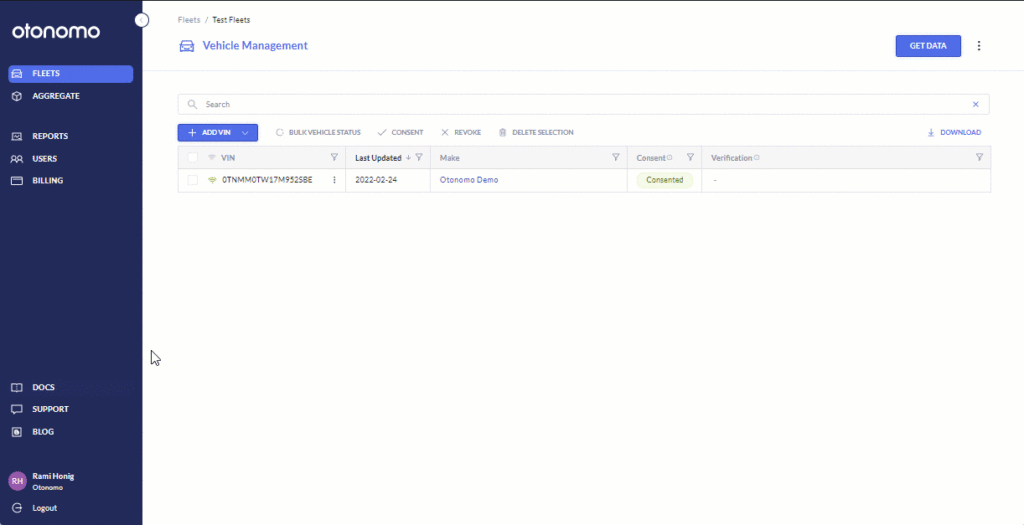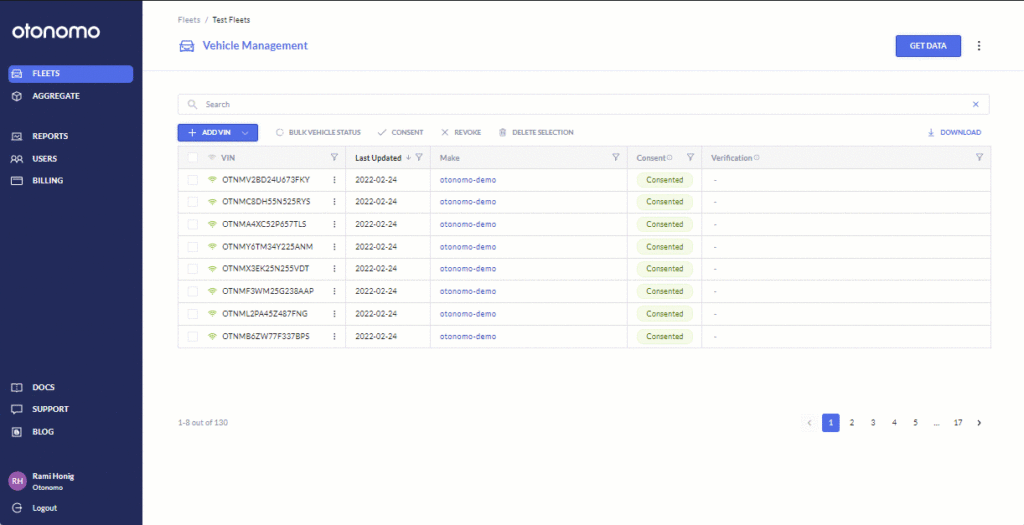
This is the first in a series of posts about how fleet operators can easily get started with the Otonomo Platform to operate more effectively, manage assets more efficiently, enhance driver safety, and cut costs. In this post we will discuss onboarding and defleeting vehicles. In future posts, we will talk about:
- Using the maintenance dashboard for remote monoitoring of vehicle health
- Using the vehicle simulator to integrate with Otonomo’s API
The life of a vehicle within a fleet begins when it’s onboarded. A big part of that process involves connecting to the vehicle to harvest its data. Today, vehicle data is paramount to efficient fleet operations, and has a wide variety of uses, from asset tracking, route optimization, fuel consumption management (or battery charge management for EVs), driver safety, and even remote diagnostics so you can service a vehicle proactively before it breaks down.
To this day, much of a vehicle’s connectivity is provided through aftermarket devices like OBD dongles or black boxes. However, installing and managing these devices poses a variety of challenges for fleet operators. Aftermarket devices can be costly to purchase and maintain, managing them is a logistical burden, they are susceptible to cyberattack, they’re not relevant for all EVs and, at the end of the day, they produce a limited dataset.
The answer to those challenges is embedded vehicle data. McKinsey estimates that by 2030, about 95% of new vehicles will hit the road with connectivity built in, up from about 50% today. Connected vehicles are a goldmine for fleet operators with the obvious and immediate benefit of removing the logistics and complexity of managing aftermarket devices.
But before a fleet can reap all those benefits from a new connected vehicle, it must be onboarded.
Onboarding is as easy as 1-2-3
Onboarding vehicles into the Otonomo platform is very easy. Once a vehicle is in the system, you can track it on a map, read its odometer (no more manual reports by the driver), get its fuel or charge level, and even read DTCs to understand if it needs maintenance.
All you need is the vehicle VIN number and its odometer reading.

Of course, you don’t have to go one vehicle at a time. To onboard a bulk of vehicles, just put the VIN numbers and corresponding odometer readings in a CSV file and upload it.

Once vehicles are uploaded to the Otonomo platform, fleets can make use of the embedded data. Through a straightforward integration, fleets can use a small set of optimized APIs to consume hundreds of normalized attributes across multiple OEM brands providing maximal coverage of the fleet while removing the logistics of aftermarket devices and reducing expenses. And for mixed fleets, in which older vehicles still require an aftermarket device, the Otonomo platform hides that complexity and provides access to the data of all the vehicles through a single platform. This is where the next in this series of posts about streamlining fleet operations will come in handy, showing how to test your integration using the platform’s vehicle simulator without even having to upload a single vehicle.
Defleeting in a click
A vehicle’s residual value is a significant factor in its TCO and plays an important role in the decision to defleet. While determining a vehicle’s residual value is not an exact science, connected car data can help maximize this figure. During the vehicle’s lifetime in the fleet, diagnostic data such as oil level and tire pressure can trigger service calls before a breakdown. This kind of predictive maintenance keeps vehicles running in good working order and maintaining their value. Similarly, behavioral data like accelerometer or brake-pedal pressure can be used to educate and incentivize drivers for safe driving avoiding unnecessary accidents or wear on the vehicle.
While there are several activities around defleeting, removing a vehicle from the Otonomo platform is probably the easiest and is a one-click operation.

Stay tuned for the next installments.
Want to learn more about using the Otonomo Platform to future-proof your fleet operations?














More Stories
DuPont materials science advances next generation of EV batteries at The Battery Show
How a Truck Driver Can Avoid Mistakes That Lead to Truck Accidents
Car Crash Types Explained: From Rear-End to Head-On Collisions